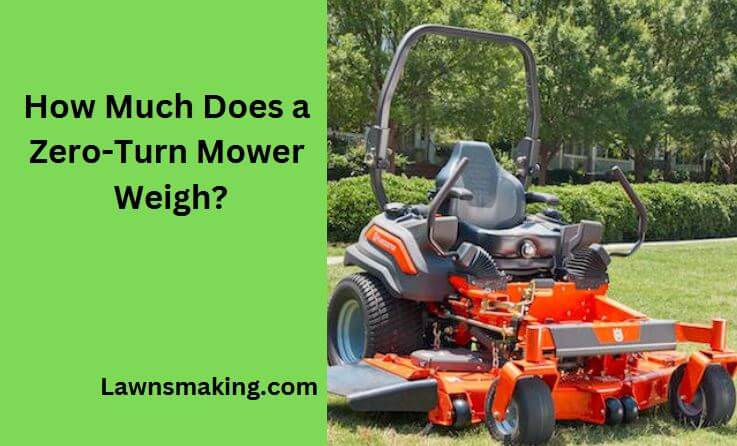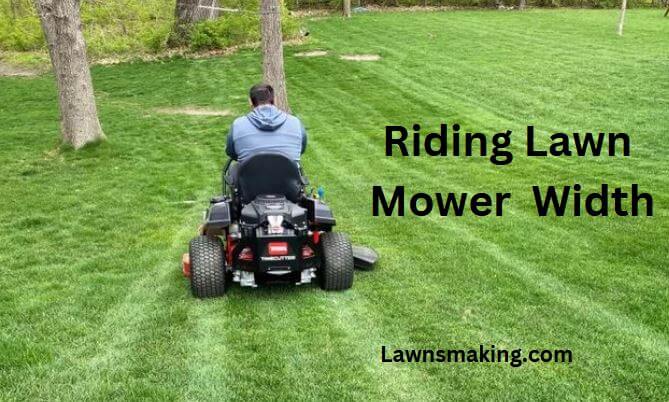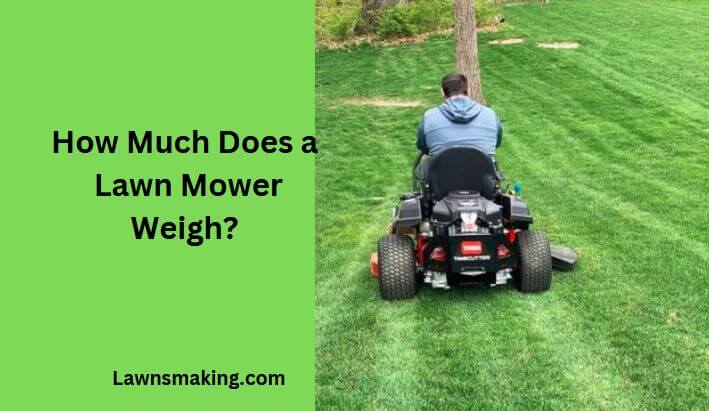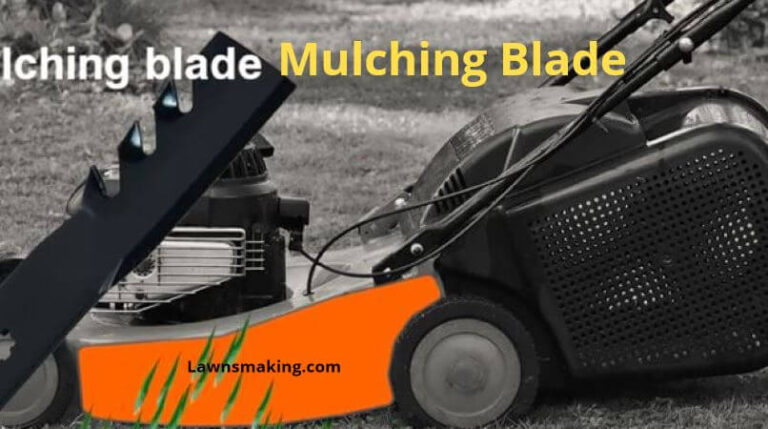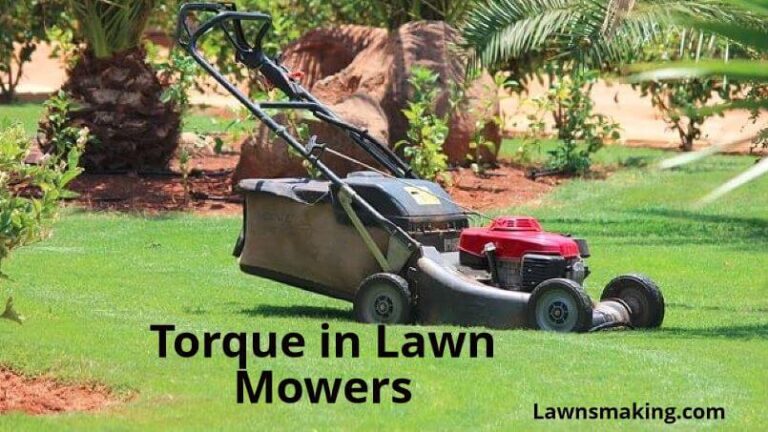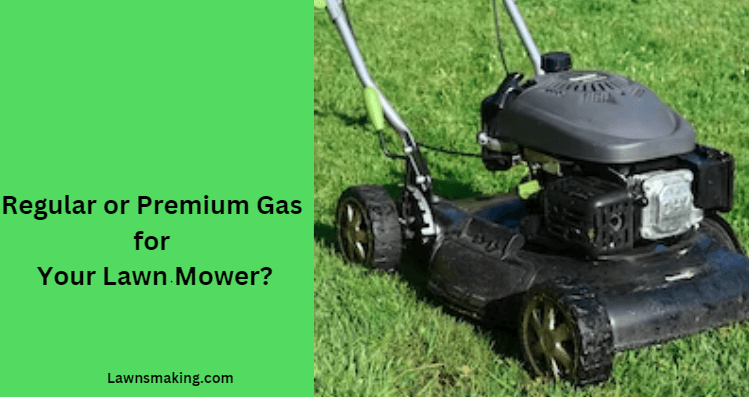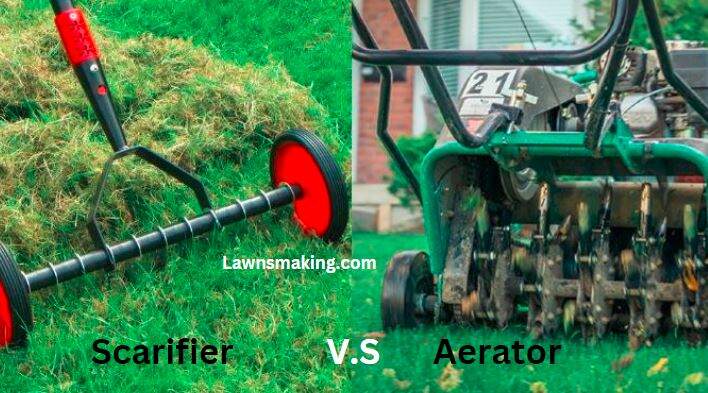
A healthy, attractive, and functional lawn is every homeowner’s dream, and you need equipment such as scarifiers and aerators to maintain it. You must use both machines to ensure your grass is well-managed and your landscaping project thrives. So, what is the comparison between a scarifier vs. aerator?
Scarifier and aerator are both lawn care tools. A scarifier is needed for thatch removal from the lawn while the aerator creates channels to improve soil aeration, proper root growth, and water infiltration and enhance overall lawn health.
In the rest of this article, I’ll discuss what a scarifier and aerator are, their uses, and differences. You’ll also know how to use these tools to ensure your lawn is in top health. Stay tuned.
Scarifier Vs. Aerator: Head-to-Head Comparison
Before we dive into the details of each, the table below shows a direct comparison between a scarifier and an aerator.
| Feature | Scarifier | Aerator |
| Purpose | -Thatch removal-Soil cultivation | -Soil aeration -Water and nutrient absorption |
| Blades/Tines | Vertical blades/tines | Hollow spikes/tines |
| Depth adjustment | Adjustable depth control | Adjustable depth control |
| Best season to use | Spring and fall | -Warm-season grass: Late spring -Cool-season grass: Early spring/fall |
| Lawn impact | It’s aggressive and may cause some damage if not handled with care | Gentle with minimal effect on grass |
| Benefits | -Scarifying Rake -Electric scarifier -Gas-powered scarifier | -Enhanced soil aeration -Water drainage |
| Equipment types | -Scarifying rake -Electric scarifier -Gas-powered scarifier | -Spike aerator -Core aerator -Tow-behind aerator |
What Is Lawn Scarifying?
Lawn scarifying is a lawn care practice that involves the mechanical removal of thatch from a lawn. Thatch is a layer on the lawn consisting of organic matter from grass clippings, roots, and other organic material.
Generally, a small amount of thatch on the grass surface is beneficial. For example;
- Thatch can act as natural mulch on your lawn
- It can insulate the soil
- Thatch decomposes to release nutrients in the soil, fertilizing your lawn.
However, excessive lawn is detrimental to your lawn’s health. It can limit light and water penetration into the soil, leading to poor lawn health.
Lawn scarifying achieves three things:
- Thatch Removal: The scarifier cuts through the thatch layer to pull it up to the surface and open the lawn. This makes the grass to grow faster and establish better.
- Debris Collection: Some scarifiers have collection bags to mop up all removed thatch.
- Aeration: When scarifying, the machines open the soil for better aeration and water infiltration.
Lawn scarification should be well-timed for better lawn recovery. Remember, the machine cutting through the thatch disturbs the grass’s expected growth.
That said, ensure to scarify your lawn every 1-3 years in spring and fall. You want to do this when the soil is cool to avoid damaging the machine’s blades.
Find Out: What Temperature Is Too Cold to Water Grass?
What Is a Scarifier and What Is Its Function?
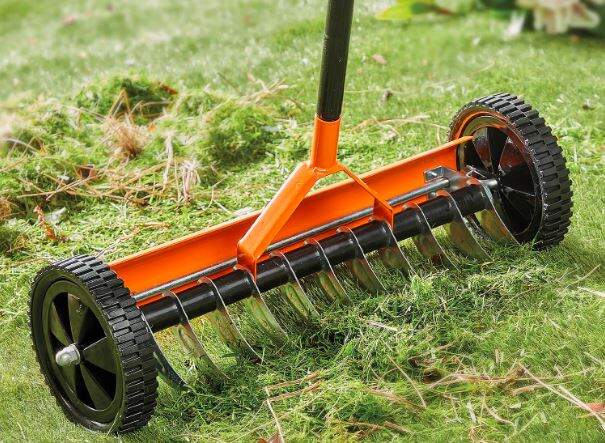
A scarifier is a tool to dethatch or remove thatch from the lawn. As explained earlier, thatch is a layer of dead grass, roots, and other organic matter accumulating on the soil’s surface.
If the layer remains on the lawn, it limits soil water infiltration and general air circulation. This means your lawn will have poor growth, establishment, and appearance.
Specifically, scarifiers have sharp blades or tines that work into the thatch layers. They cut through these layers, turning them to the surface.
There are different types of scarifier cutting components: rotating blades and spring-loaded tines. Whether flail or solid design, the rotating blades are sharp to cut through the layers.
Spring-loaded tines are lined with tines that poke holes through thatch and soil. Both scarifiers come with adjustable depth settings to help with depth control.
What Is Lawn Aeration?
Lawn aeration involves making several holes in the soil to encourage better soil aeration, water infiltration, and nutrient circulation. It’s the process of breaking the soil to loosen it and make it better for the growth of your lawn.
Lawn aeration is vital if your soil is compacted. It’s hard for lawns to thrive under compacted soil conditions. This is because roots cannot freely move in such soils— so access to nutrients becomes limited, causing poor growth.
Soil compaction is a common problem because of the following reasons;
- Foot traffic
- High clay content in some areas
- Construction activities
Aeration should be done during the active stage of lawn growth. Even so, make sure you mow the grass before aerating the soil.
Besides the already-mentioned benefits, lawn aeration offers homeowners another chance of overseeding their lawn with new grass.
Aeration equipment used to make holes in the lawn is called a lawn aerator.
What Is an Aerator and What Is Its Function?
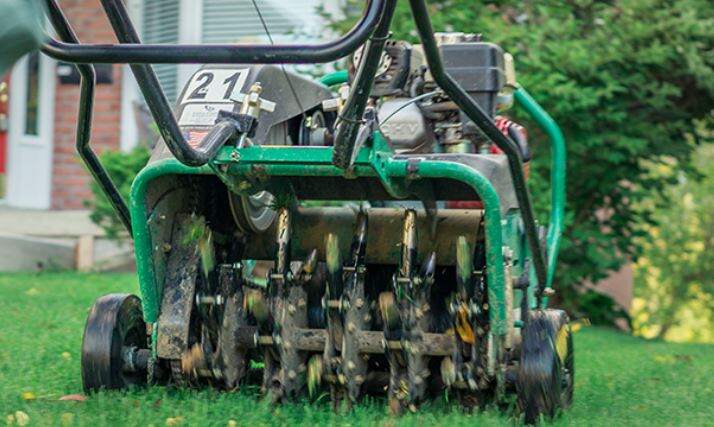
An aerator is an equipment used to make holes in the lawn. These holes allow free air circulation, water, and nutrient infiltration.
Aerators can be categorized into two types:
- Core Aerators
Core aerators are machines that remove small plugs of soil from underground to the surface. Usually, core aerators have 2-3 inch cores that break the soil and redistribute it on the lawn surface.
- Spike Aerators
Spike aerators have spikes on their platform. The spikes are designed to poke the ground and puncture soil layers. However, they don’t remove the soil to the surface but compact it during hole creation.
Spike aerators should not be a great option if you are looking for a machine to help eliminate the compaction problem.
Soil aeration should be done more regularly – at least once a year. If soil compaction is a recurring problem, you must aerate your lawn several times a year.
Is It Better to Scarify or Aerate Lawn?
It’s better to scarify or aerate lawn as the two processes improve soil conditions like air circulation, water infiltration, and nutrient access. Scarification and aeration are vital as they serve different purposes but complement each other.
Once the lawn is dethatched and well-aerated, its health improves significantly thanks to better nutrient uptake. The result is a pleasant-looking, attractive lawn.
Scarification is necessary when thatch is excessive, over ½ inch thickness. So, it could take a year or two to scarify your lawn and a few months to aerate the same lawn. The main reason for the shorter interval for aeration is soil compaction, which is common in lawns with high foot traffic.
That said, both activities are essential for your lawn. Also, remember that the interval of scarification and aeration is not fixed as lawns grow in different conditions.
What Goes First Aerator or Scarifier?
The aerator goes first before the scarifier, especially if your lawn has compaction and poor drainage issues. Aeration enables you to perforate the soil with tiny holes. Then, you can use the scarifier to dethatch the lawn if there’s plenty of thatch.
Typically, scarification should follow aeration. It’s more intense as you break the thatch layer on the lawn’s surface.
However, you will only sometimes need to aerate and scarify simultaneously. But this is the order in case the two activities are required during the same period.
So, you need to know whether your lawn requires both tools. Contact lawn care service providers for expert recommendations and guidance if you need more clarification.
Otherwise, different lawns need specific interventions depending on factors like grass type, condition, soil condition, prevailing weather conditions, and previous lawn care practices.
Does a Scarifier Aerate Your Lawn?
A scarifier can aerate your lawn because the purpose of scarification is to dethatch the lawn for air and water to penetrate the soil and help grow grass. Dethatching indirectly contributes to lawn aeration.
However, a scarifier only aerates the soil to a smaller extent. It can make small holes while scarifying. More thorough aeration involves creating tons of holes in the lawn. That can only be done best by an aerator.
Therefore, get a dedicated core aerator instead of relying on a scarifier for adequate aeration and the best overall lawn health. Don’t forget that great aeration contributes to proper water percolation in the lawn and nutrient availability to the grass.
When to Aerate Your Lawn
You can aerate your lawn for cool-season lawns during early fall or spring. Nevertheless, aeration during spring or early summer is best for warm-season grasses. You need to do proper aeration timing as it should match the active growth stage of the grasses.
Timely aeration helps your lawn recover faster and get much stronger. This is because as you aerate the soil, you disturb the soil structure, interfering with some grasses.
That said, aeration should be done when the soil is moist. This doesn’t mean working on excessively wet lawns, as this can also pose a serious problem making the desired poking. So, wait a couple of days after rainfall or irrigation, then aerate.
Aerating dry soils is a challenging task that also leaves behind undesired results.
When to Scarify Your Lawn
Scarify your lawn in spring or early autumn to avoid scarification coinciding with frost. You should scarify your lawn at least once a year or after two years.
Even so, different lawns may need different approaches depending on the prevailing conditions, such as grass type, climate, thatch depth and frequency, lawn health, and more.
Just like aeration timing, you should scarify your lawn using the following general guidelines;
- Cool-season grasses: The best time to scarify cool-season grasses like Kentucky bluegrass and ryegrass is spring or early fall. This is because, at this time, temperatures are cool, and grass can recover fast.
- Warm-season grasses: Late spring to early summer is perfect for warm-season grasses such as Bermuda or Zoysia. During this time, the grasses grow actively.
- Transition zones: If you live in regions that grow both cool and warm-season grasses, you can scarify during the transition periods within spring and fall.
Before scarifying, avoid doing it in extreme weather conditions like heat or drought and extreme wetness.
Are There Alternatives to a Scarifier?
There are alternatives to a scarifier for lawn care and maintenance. However, the specific alternative depends on your specific goals.
For example, you can scarify a lawn with a hand rake or a dethatching rake. This manual tool is designed with sharp tines that dig into the thatch and moss from the lawn’s surface.
While using a dethatching rake can be exhausting, it’s a cost-effective alternative to powered scarifiers for small lawns.
On top of that, you can also use a lawn mower with dethatching blade. If your lawn mower has blades or attachments for dethatching, you can use them for scarification.
